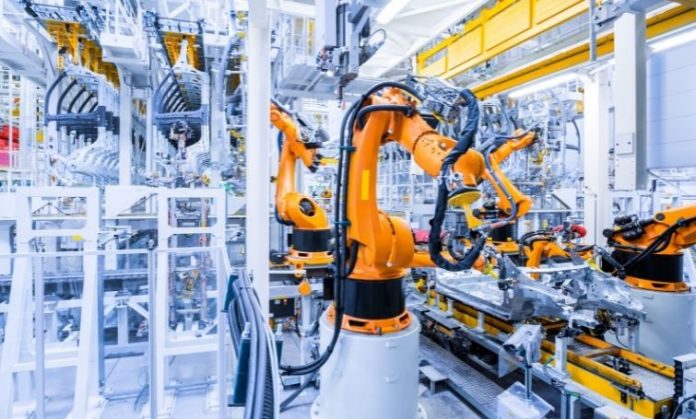The process of tolerancing involves establishing the acceptable parameters for variation in size, shape, or position of a component or assembly. According to “GD&T”, in the aerospace and medical industries, tolerancing is of paramount importance for ensuring the proper functioning and reliability of parts. Precise tolerancing is crucial for the safety and performance of aerospace and medical devices. This article delves into the significance of tolerancing in these industries, the challenges and solutions for achieving precise tolerances, the latest developments in tolerancing technology, and the future outlook.
Tolerancing in Aerospace
The aerospace industry is renowned for its demanding nature, requiring a high level of precision and accuracy in the manufacture of its components. Critical aerospace components, such as aircraft engines, landing gears, and flight control surfaces, all require tight tolerancing to ensure optimal performance and safety. However, achieving precise tolerances in aerospace manufacturing can present several challenges.
One challenge is the complex geometry of parts. Aerospace parts often have intricate shapes, making it difficult to maintain precise tolerances. To overcome this, manufacturers may utilize advanced measurement technologies, such as laser scanning and structured light scanning, to accurately capture the geometry of parts.
Another challenge is the materials used in aerospace parts. Advanced materials, such as composites, can be challenging to machine to precise tolerances. To overcome this, manufacturers may utilize specialized cutting tools and advanced machining techniques, such as high-speed machining and five-axis machining.
Tolerance stack-up is another challenge in aerospace manufacturing. This refers to the cumulative effect of individual tolerances on the overall performance of a component. In aerospace, the tolerance stack-up can be significant, making it difficult to achieve precise tolerances. To overcome this, manufacturers may use tolerance analysis software to simulate the tolerance stack-up and optimize tolerances.
Tolerancing in Medical Devices
The medical device industry demands a high level of precision and accuracy in the manufacture of its components. Implantable devices, such as artificial joints and pacemakers, as well as diagnostic equipment, such as CT scanners and MRI machines, all require tight tolerancing to ensure optimal performance and safety. However, achieving precise tolerances in medical device manufacturing can present several challenges.
One challenge is the complex geometry of parts. Medical devices often have intricate shapes, making it difficult to maintain precise tolerances. To overcome this, manufacturers may utilize advanced measurement technologies, such as coordinate measuring machines (CMM) and optical comparators, to accurately capture the geometry of parts.
Another challenge is the materials used in medical devices. Biocompatible materials, such as titanium and stainless steel, can be challenging to machine to precise tolerances. To overcome this, manufacturers may utilize specialized cutting tools and advanced machining techniques, such as electrochemical machining (ECM) and ultrasonic machining (USM).
Tolerance stack-up is another challenge in medical device manufacturing. This refers to the cumulative effect of individual tolerances on the overall performance of a component. In medical devices, the tolerance stack-up can be significant, making it difficult to achieve precise tolerances. To overcome this, manufacturers may use tolerance analysis software to simulate the tolerance stack-up and optimize tolerances.
Advancements in Tolerancing Technology
In recent years, there have been significant advancements in tolerancing technology, which have improved the precision and accuracy of tolerancing.
These advancements include:
3D printing: 3D printing, also known as additive manufacturing, has revolutionized the way parts are manufactured. It allows manufacturers to create complex geometries with precise tolerances, which would be difficult to achieve with traditional manufacturing methods.
Computer-athout the need for expensive tooling or molds. This is especially useful for aerospace and medical industries where one-off or low-volume parts are required.
Computer-aided tolerancing (CAT): CAT is a software-based approach that uses computer simulations to predict the tolerance stack-up of a component. It allows manufacturers to optimize tolerances and improve the precision and accuracy of tolerancing.
Metrology: Metrology is the science of measurement, and it has seen significant advancements in recent years. Advances in measurement technologies such as laser scanning, structured light scanning, and coordinate measuring machines (CMM) have improved the accuracy and repeatability of measurements.
Impact of these advancements on aerospace and medical industries
The advancements in tolerancing technology have had a significant impact on aerospace and medical industries. They have improved the precision and accuracy of tolerancing, which in turn has improved the performance and safety of aerospace and medical devices. 3D printing has enabled manufacturers to create complex geometries without the need for expensive tooling or molds. This has led to reduced costs and increased efficiency in the manufacturing process. CAT has allowed manufacturers to optimize tolerances and improve the precision and accuracy of tolerancing. Metrology has improved the accuracy and repeatability of measurements, which has improved the quality control processes in these industries.
Conclusion
In conclusion, tolerancing is a vital aspect of the aerospace and medical industries, as it guarantees the proper functioning and reliability of parts. The achievement of precise tolerances is a critical factor in the safety and performance of aerospace and medical devices. The advancements in tolerancing technology have significantly improved precision and accuracy, and have had a profound impact on these industries. The future outlook for tolerancing technology and practices in the aerospace and medical industries is optimistic and we can expect to see continued progress in the future.
































